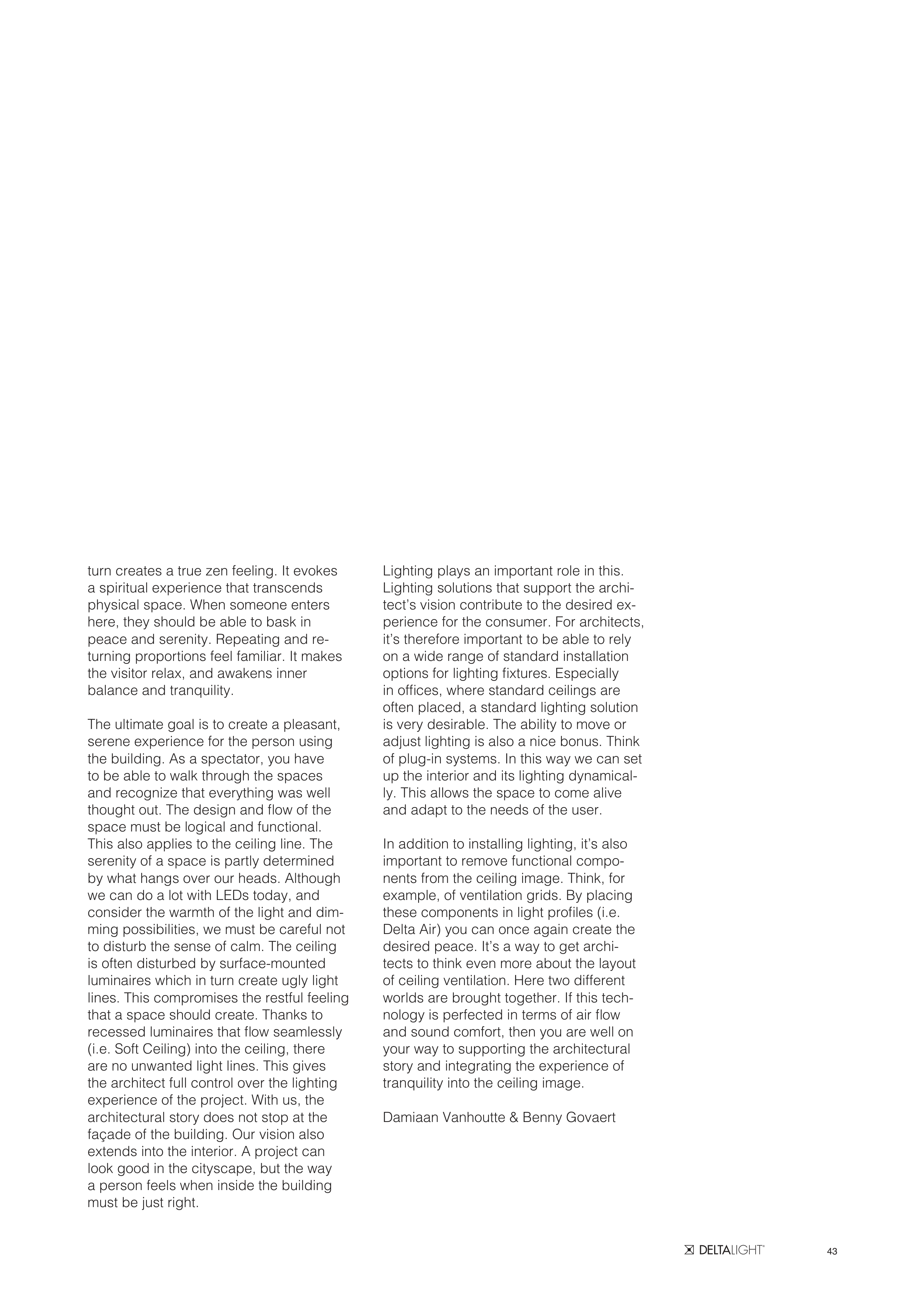43
turn creates a true zen feeling. It evokes
a spiritual experience that transcends
physical space. When someone enters
here, they should be able to bask in
peace and serenity. Repeating and re-
turning proportions feel familiar. It makes
the visitor relax, and awakens inner
balance and tranquility.
The ultimate goal is to create a pleasant,
serene experience for the person using
the building. As a spectator, you have
to be able to walk through the spaces
and recognize that everything was well
thought out. The design and flow of the
space must be logical and functional.
This also applies to the ceiling line. The
serenity of a space is partly determined
by what hangs over our heads. Although
we can do a lot with LEDs today, and
consider the warmth of the light and dim-
ming possibilities, we must be careful not
to disturb the sense of calm. The ceiling
is often disturbed by surface-mounted
luminaires which in turn create ugly light
lines. This compromises the restful feeling
that a space should create. Thanks to
recessed luminaires that flow seamlessly
(i.e. Soft Ceiling) into the ceiling, there
are no unwanted light lines. This gives
the architect full control over the lighting
experience of the project. With us, the
architectural story does not stop at the
façade of the building. Our vision also
extends into the interior. A project can
look good in the cityscape, but the way
a person feels when inside the building
must be just right.
Lighting plays an important role in this.
Lighting solutions that support the archi-
tect’s vision contribute to the desired ex-
perience for the consumer. For architects,
it’s therefore important to be able to rely
on a wide range of standard installation
options for lighting fixtures. Especially
in offices, where standard ceilings are
often placed, a standard lighting solution
is very desirable. The ability to move or
adjust lighting is also a nice bonus. Think
of plug-in systems. In this way we can set
up the interior and its lighting dynamical-
ly. This allows the space to come alive
and adapt to the needs of the user.
In addition to installing lighting, it’s also
important to remove functional compo-
nents from the ceiling image. Think, for
example, of ventilation grids. By placing
these components in light profiles (i.e.
Delta Air) you can once again create the
desired peace. It’s a way to get archi-
tects to think even more about the layout
of ceiling ventilation. Here two different
worlds are brought together. If this tech-
nology is perfected in terms of air flow
and sound comfort, then you are well on
your way to supporting the architectural
story and integrating the experience of
tranquility into the ceiling image.
Damiaan Vanhoutte & Benny Govaert


